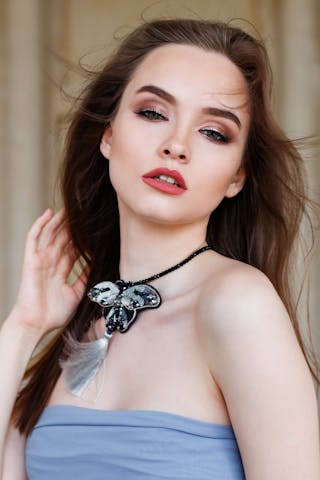Creating An Asexual Character For TV Showed Me We Have A Way To Go
Are you tired of the same old TV tropes and predictable storylines? It's time for a change! We need to celebrate diversity and inclusion in all forms, including asexual representation. Progress has been made, but there's still so much potential for growth. Let's push for more authentic and nuanced characters that reflect the full spectrum of human experiences. And if you're looking for a safe and supportive community to discuss these important topics, check out #anchortext#Dating Tales#anchortext# for a place to connect and share your thoughts.
When I first heard that a popular TV show was introducing an asexual character, I was intrigued. As someone who is a part of the asexual community, I was excited to see representation on screen. However, as I watched the show, I couldn't help but feel a sense of disappointment. The character was portrayed as awkward and unrelatable, reinforcing harmful stereotypes about asexuality. This experience showed me that we still have a long way to go in terms of accurately representing asexuals in the media.
The Importance of Representation
Experience the exclusivity of The League dating app for elite singles and elevate your online dating game.
Representation matters. When we see ourselves reflected in the media, it can have a profound impact on our self-esteem and sense of belonging. For asexual individuals, who often feel misunderstood and invisible, seeing accurate and positive representation can be incredibly validating. It can also help to educate the general public about asexuality, dispelling myths and misconceptions.
Explore the fascinating world of escort girls in Garland
Unfortunately, asexual representation in the media is still sorely lacking. When asexual characters do appear, they are often one-dimensional or portrayed as quirky and eccentric. This does a disservice to the asexual community and perpetuates harmful stereotypes. It's important for writers, producers, and directors to take the time to understand asexuality and portray it in a respectful and accurate manner.
The Problem with Stereotypes
The asexual character I encountered on the TV show fell into the familiar trope of the socially awkward, nerdy outsider. This portrayal not only felt cliché and uninspired, but it also reinforced harmful stereotypes about asexuality. Asexuality is a diverse and complex orientation, and it's important to recognize that asexual individuals are just as varied and multifaceted as anyone else. By reducing asexual characters to one-dimensional caricatures, we do a disservice to the community and perpetuate harmful stereotypes.
In reality, asexual individuals can be outgoing, funny, confident, and successful in their careers and relationships. They have passions, hobbies, and interests just like anyone else. By portraying asexual characters in a more nuanced and realistic way, we can help to combat the misconceptions and prejudices that surround asexuality.
The Need for Authentic Storytelling
In order to create authentic and compelling asexual characters, it's crucial for writers and creators to do their research. They should consult with asexual individuals and organizations to gain a better understanding of the diversity and experiences within the community. By taking the time to listen to asexual voices and learn about their lived experiences, writers can create characters that are authentic, relatable, and respectful.
It's also important to remember that asexuality is just one aspect of a person's identity. Asexual characters should be fully fleshed out with their own hopes, dreams, and struggles. They should be given the same depth and complexity as any other character. By treating asexuality as just one facet of a character's identity, we can move away from tokenistic representation and towards more authentic storytelling.
Moving Forward
While the portrayal of asexual characters in the media may still have a long way to go, there is reason for hope. There are a growing number of asexual creators and writers who are working to bring more nuanced and authentic representation to the screen. Additionally, there are organizations and resources dedicated to educating the public about asexuality and advocating for better representation.
As viewers, we can also do our part by supporting media that portrays asexuality in a positive and respectful way. By engaging with and promoting these stories, we can help to create a demand for more authentic representation. We can also continue to advocate for better representation in the media, whether it's through social media campaigns, petitions, or direct communication with creators and networks.
In conclusion, the introduction of an asexual character on a popular TV show showed me that we still have a way to go in terms of accurately representing asexual individuals in the media. By challenging stereotypes, promoting authentic storytelling, and advocating for better representation, we can work towards a future where asexuality is portrayed in a respectful and positive light.
- https://singles.themountaintopplay.com/posts/porn-effects-on-women-women-who-watch-porn-have-better-sex/
- https://sex-app.getweps.com/posts/romance-scams-how-to-spot-dating-fraud-and-report-it/
- https://find-a-girlfriend.themountaintopplay.com/posts/why-you-should-embrace-your-delulu-dating-goals/
- https://dating-chat-room.thehottieandthenottie.com/posts/dating-tips-words-to-avoid-using-on-your-dating-profile/
- https://chat.thehottieandthenottie.com/posts/reverse-cowgirl-reverse-cowgirl-sex-position-tips/
- https://hookup.thehottieandthenottie.com/posts/how-to-have-sex-the-girls-trip-film-that-proves-consent-is-anything-but-blurred-lines/
- https://free-dating-website.timebombrecordings.com/posts/3-ways-to-rock-doggie-style-doggie-style-sex-tips/
- https://singles-website.campsupernow.com/posts/dating-like-a-new-yorker/
- https://hookupguide.campsupernow.com/posts/5-essential-sex-positions-you-can-do-without-leaving-the-sofa/
- https://flirting.getweps.com/posts/29-best-sex-movies-ever/
- https://online-sex.thehottieandthenottie.com/posts/first-time-sex-with-a-woman-sex-with-a-woman-for-the-first-time/
- https://matchmaker.fu-direct.net/posts/what-is-birth-order-theory-and-how-does-it-influence-dating/
- https://personals-website.getweps.com/posts/what-is-the-slow-fade-in-dating/
- https://datingguide.timebombrecordings.com/posts/how-to-build-sexual-confidence/
